Introduction to gardening tips for November: November is a great month to prepare your plants for the cool winter conditions and wrap up some gardening tasks that you may have already started in October. November is the time to finish cleaning your yard and garden. It’s getting colder and wet when we pull in November. Trees are putting on their autumn displays and winter stem starts to come into their own. As autumn turns to winter, your main jobs in the garden are mostly about protecting plants and structures from the upcoming wilder weather.
If you plan to build a spring garden, you should spend some time this month preparing for the next growing season. The leaves are falling fast and the wind and rain are increasing. The tender plants will need to be protected from frost, storms, and frozen rains. Move plants to a greenhouse, or a shelter, but if you can’t, it’s worth wrapping plants or pots. Remember winter can be a difficult time for birds in terms of water and food, so keep supplies well up.
Guide on gardening tips for November, vegetable, flower, fruit & gardening, greenhouse care, house plant care and general plant care in November
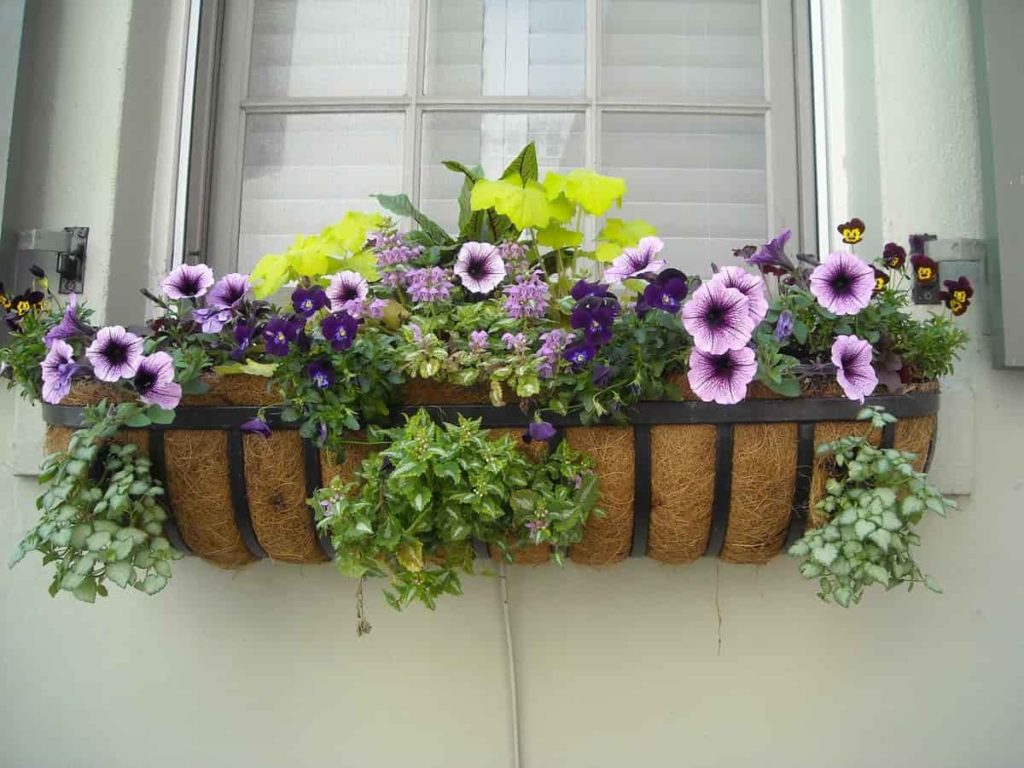
Vegetable gardening in November
- Plant salad green like Lettuce, Mesclun, Radish, and Spring Onions regularly for summer salads.
- If you are growing from seed, Beans, Beetroot, Capsicum, Carrots, Celery, Courgettes, Cucumbers, Eggplant, Lettuce, Mesclun, Parsnips, Radish, Spinach, Sweet Corn, and Tomatoes.
- Soak seedlings before planting to prevent transplant shock, and plant every 2 to 4 weeks to promote strong root growth and keep your garden flourishing.
- Harvest the Asparagus, Broad Beans, Broccoli, Cabbage, Cauliflower, Lettuce, Mizuna, Spinach, Spring Onions.
- First, trim the existing Asparagus leaves to the ground after a hard frost and mulch beds.
- Make sure not to store Apples or Pears with vegetables. Fruits leave out Ethylene gas that speeds up the breakage of vegetables and will produce a strange taste.
- Prepare a perennial vegetable bed so that the Rhubarb plants and the Asparagus can be planted with crowns.
- Keep planting Onion, Shallot, and Garlic sets. Dig on the heavy soil that contains organic matter before planting.
- Place a scaffold plank on the ground along the main access route in your plot. It allows access but prevents compacting of soil when you walk across it.
- Spread well rotten farm manure on the surface of your vegetable beds to rot in winter.
- Check your summer crop of Onions and Garlic, remove any rotting bulb immediately.
- The best cultivation is done under any unused, finished manure to improve the soil of the garden.
- Make manure by removing all plant debris to prevent pests or diseases from winter in the garden.
- Root crops such as Carrots, Radishes, Turnips, and Jerusalem Artichokes are stored well outside in the ground. Bury these crops under a deep coat of leaves or straw shortly before the ground freezes. Harvest as needed by pulling back this protective mulch during winter.
In case you miss this: Gardening Tips for January, Ideas, and Techniques
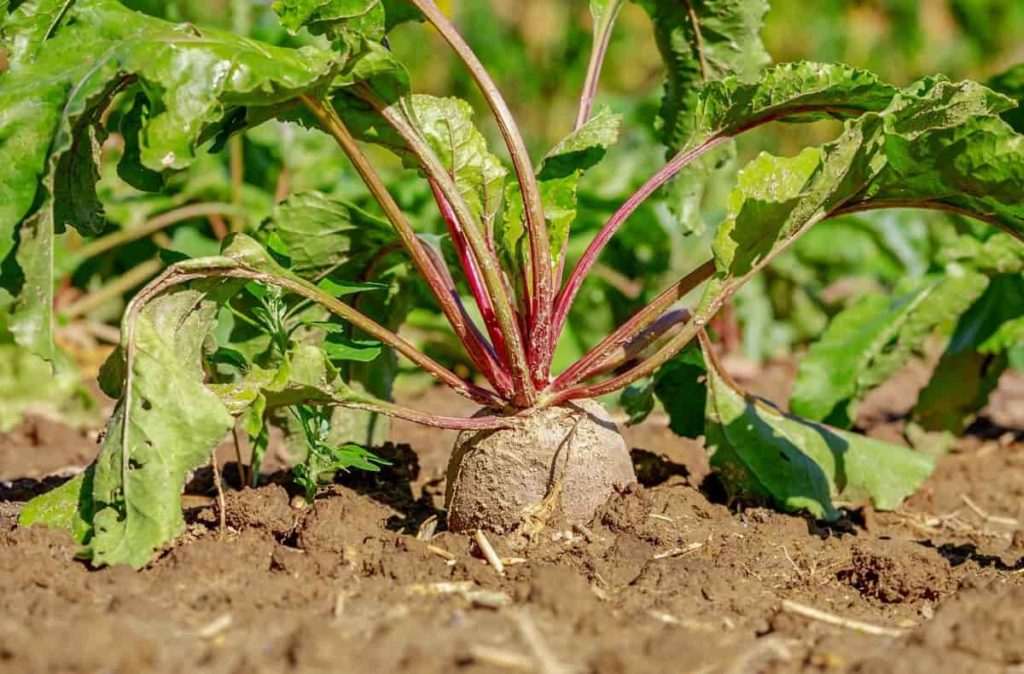
Flower gardening in November
- Take away fallen leaves from around the base of any rose bushes that suffered from black spots or rust this summer, to reduce the chance of reinfection next year.
- Continue picking up tubers of Dahlia Tubers, Gladiolus corms, and Begonia for dry storage during the winter months. Remove the dead leaves before storing them.
- Cut the yellow leaves of the perennial herbaceous plants, and lift and distribute the crowded clusters to maintain your excitement.
- You can still plant Lily Bulbs in pots this month. They can either be brought in within the next spring to force them into the initial display or left out to naturally flower in the summer.
- Some of the Tulips persist year after year, some perform less well are treated as beds, and are replaced every year.
- Now is the last chance to put up winter beds. You can try wallflower, Bellis, Primula, Viola, and other spring bed plants, plant them in well-prepared land or plant proper compost pots.
- Penstemons are the best dead-headed and are left until spring when they can be cut further. In mild areas, they can continue to flower well in late autumn and early winter.
- Ornamental grass and bamboo can be cut and eliminated at this time of year.
- Pick up and store Dahlias, Cannas, and tuberous bedding Begonias that have previously been affected by frost.
- Check the Chrysanthemums regularly for white rust symptoms.
- Be aware that many diseases will occur in the soil or on plant debris in winter. Along with the Antirrhinum rust and Delphinium black blotch, Sclerotinia will lay dormant and re-infected plants when it arrives next year. If the problem is severe, it may be necessary to reapply new samples elsewhere.
- Grey mould or botrytis can be annoying in wet weather.
In case you miss this: Gardening Tips for February, Ideas, and Techniques
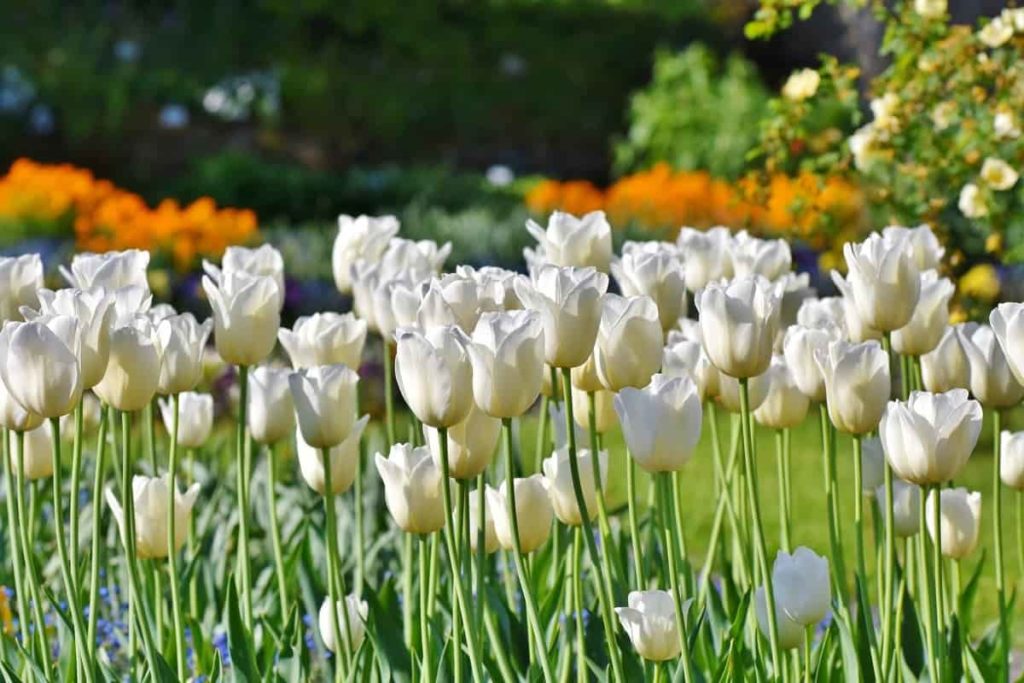
Fruit gardening in November
- Plant rat protectors on fruit trees to protect them during winter.
- Rake and dispose of Apple and Cherry leaves. Good methods of cleanliness reduce the re-attack of pests and diseases next season.
- After the ground is frozen, mulch small fruit plants like Strawberries. An inch of straw or leaves is ideal for strawberries.
- Mulch strawberry plants after the ground freezes.
- Plant current plants as bare roots this month, while they are in their inactive state.
- Plant bare-root juicy plants now for a delicious household crop.
- Clean your Strawberry plants, cut any dead leaves and remove runners.
- Prune Apple and Pear trees at any time between now and February.
- Apply grease bands to the trunks of fruit trees to prevent the un-flowered female winter moths from climbing the trunks and laying eggs in branches.
- Remove the top net from the fruit cages as heavy snow will make it sag in winter.
- Check the fruits in the store and remove any signs of diseases or rot immediately.
- Harvest the Pecan when they start falling from the trees.
- The fallen, damaged, or mummified fruits should be cleaned from the garden and buried and destroyed.
- Commercial tree guards or protective collars made of 18-inch-high hardware fabric will prevent fruit trees from biting rabbits and rats from stem injury.
- Take hardwood cuttings from healthy fruit bushes, including Blueberries, and Gooseberry.
In case you miss this: Gardening Tips for March, Ideas, and Techniques
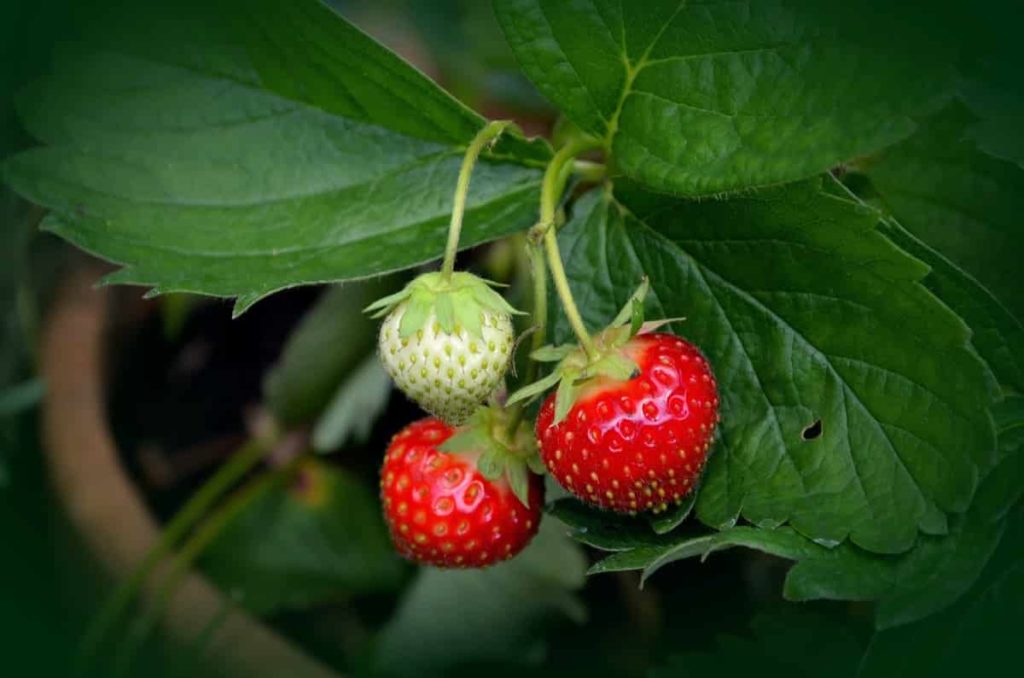
Greenhouse care in November
- Replace the damaged glass and clean it thoroughly, wash the glass, floor with gardening disinfectant to kill any winter worms and diseases.
- Protect greenhouse plants from frost by insulating them from bubble wrap sheets attached to the inside of the frame. Remember to continue aviation especially after watering.
- Install solar lights in the greenhouse so you can still leave in dark winter evenings to check your plants.
- Take care not to give too much water to plants as winter approaches.
- Convallaria can be dug, potted, and forced into the greenhouse at this time of year. The rhizomes that are kept in the winter frost-free greenhouse will remain in active development, but given the little heat, they will be ready to flower shortly after replanting in the garden next spring.
- A fan or a paraffin heater should do the trick in small glasshouses. Maintaining high temperatures will require more careful planning and better greenhouse heating systems. Greenhouse insulation can help keep the frost out of the whole, or part of the greenhouse.
- Complete cleaning of spent crops from greenhouses, if not done yet. Clean and disinfect the greenhouse structure with a Jeyes Fluid or Citrox.
- Make sure you have removed all shading paint from greenhouse glass, to maximize the light levels in the dark months of the year. If glasshouses are applying insulation, just attach it to the sides and north-facing ceilings to allow it to go into as much light as possible.
- If you enjoy working in your greenhouse in the winter, consider installing greenhouse lighting to make it possible even on dull days and in the evening or the morning.
- Check that the greenhouse heater is still working, if you have not already done so. Replace any spent broken parses on the paraffin heater, and get an electric or gas heater service if needed.
- When bringing plants to a greenhouse, carefully check them for any insects and diseases raised in the garden. Unhappy-looking plants can always be tipped out of the pot to examine soil worms such as vine larvae for underwater symptoms.
In case you miss this: Gardening Tips for April, Ideas, and Techniques
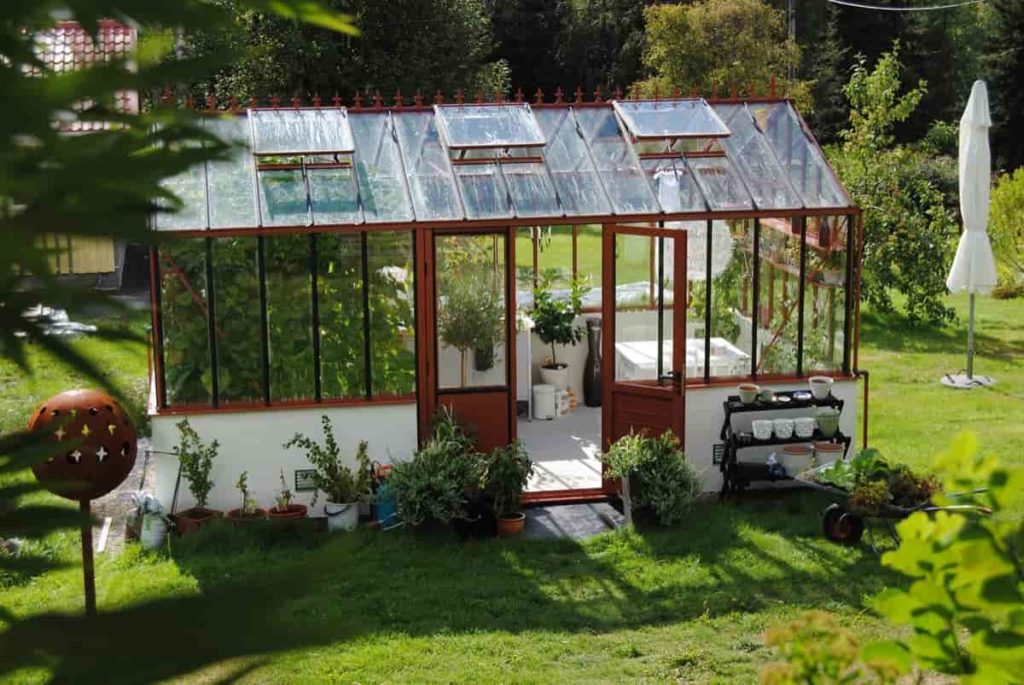
Trees and shrubs care in November
- Protect your roses in the cold winter months. Place the bark mulch around the base so that the first part of the stem is completely covered or soil-mounded and which of the roses purchased after the soil freezes.
- After freezing the ground, protect the grafted roses from the winter loss by mounding 10 to 12 inches of soil around the base.
- Protect young trees from the sun, a harmful form of sunburn due to low winter sun and volatile temperatures. Cover the trunks with tree wrap.
- Continue the water well to plant trees, bushes, bedding, lawn areas, and recently evergreen to hard frost. Plants should go well with water in winter.
- Straw, bracken, or something similar can be used to pack around cooking plants and protect them from frost. A wooden frame with clear polythene spread over it can do the same thing without blocking light from evergreen, but don’t let polythene touch the leaves, as condensation at these points can freeze, or cause decay.
- This is also a good time for transplanting trees and shrubs growing in unsuitable positions.
- Lightly prune the bush roses, if not done in advance, as reducing their height will prevent the wind rock. These plants are usually shallow roots and can be loose in the soil if affected by strong winds.
- Climbing roses should be pruned so far, they are usually done long ago in autumn.
- Tie the wall shrubs and climbers on their help to protect them from wind damage. Any growth that refuses to train in this way can be eliminated.
- Check the tree stakes and the ties are safe and will withstand winter, make sure the ties aren’t choking the trunks or branches, they may need to be loosened.
- If you have snow in your area, you may need to brush it off the branches of the conifers. Heavy snowfall can play branches and spoil the shape of a tree.
Houseplants care in November
- When the central heating comes, stand tropical house plants on a wet gravel tray to counter the moisture loss. Grouping them also helps in making humid microclimates around your houseplants.
- Check any bulbs being forced into early growth in the dark. When they have grown about 2.5 centimeters bring them to a light, cool room or frost-free greenhouse so they can progress. When flower buds appear, they can be brought to warm rooms to provide seasonal displays.
- Avoid cooling by moving houseplants away from windows as nights cool.
- Give as much light as you can to houseplants as soon as the low fall day begins.
- Reduce house plant fertilizer by one-half for winter months.
Herbs gardening in November
- The Mint will stop growing, and the top leaves will darken. Do not harvest any Mint leaves after this month. Allow plants to be inactive and resting. The same is the case for Chives. These plants will also stop growing, bending, and lying flat on the ground. They will resume development at the end of March.
- Keep herb beds free of fallen leaves. If you allow leaves to remain on herb plants, the leaves will suppress them. Gather the leaves and bag them or put them in the compost bin.
- November is a good time to mulch herb beds, borders, and garden areas. Put a 3-inch mulch around the base of each plant. There is still time to take Rosemary and Sage cutting. Start them in a sunny window and plant them out in April. If sunlight and water are given, they will grow and create all winter.
- Re-pot the indoor herbs plants this month. Choose a container in which they are growing. Use fresh potting soil and water herbs plants. Most of them don’t need plant foods at this time of year.
In case you miss this: Gardening Tips for May, Ideas, and Techniques
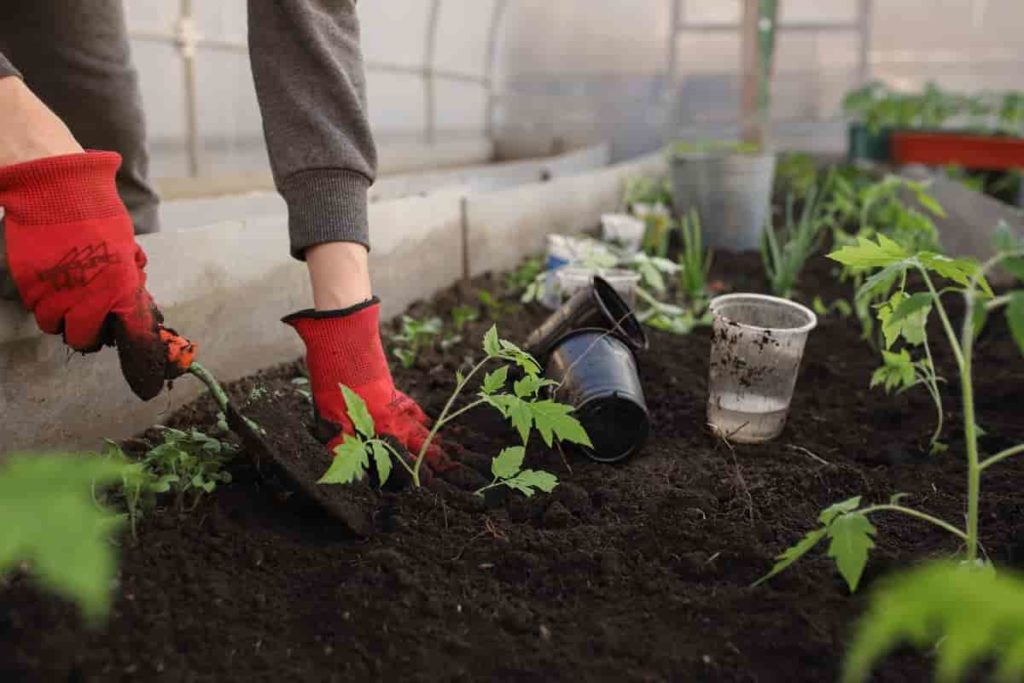
General plant care in November
- Create a cool frame to shelter young plants from risky winter weather.
- Sweep debris and fallen leaves from leaves and beds to prevent fungal seeds, slugs, and snails from winter.
- Keep an eye on the Conifers with your pot. Long varieties may need to be staked out for extra security in exposed, windy gardens.
- Pick up and move plants when they are inactive if you need to.
- Make bins to compost the material of fallen leaves and dead plants.
- Close the pond with a net to prevent the leaves from falling into them. If you need to clean the pondweed, keep it by the pool for a day after removing it, so that wildlife can escape back into the water.
- Cut any dim bed plants, annual and old crops, and add to the compost bin.
- Start trimming free-standing Apples and Pear trees once inactive, to control their size and encourage fruit.
- Remove pond pumps and fountains to avoid ice damage when temperatures drop below freezing.
- Wrap bubble polythene or hessian around pots to protect against frost damage and preserve weak plant roots.
- Place waterproof covers on any garden furniture you can’t take indoors in winter.
- How to Grow Hibiscus from Flower
- Plantation Ideas for Home Decoration: A Beginners Guide
- Flower Garden Designs and Layouts for Beginners
- Planting and Spacing Techniques in Papaya: A Beginner’s Guide
- Growing Gold: Essential Techniques for Planting Pineapples
- How to Make Kalanchoe Plant Bushy: Home Remedies and Solutions
- 11 Reasons Why Your Gardenia is Not Blooming: Home Remedies and Solutions
- Eco Elegance: The Guide to Designing a Drought-Tolerant Landscape
- Gardening on a Slope: Strategies for Hillside Landscaping
- Nourish and Flourish: Top Organic Mulches for Thriving House Plants
- Everything You Want to Know about Indian Mogra Flower: Discover Uses and Growing
- Green Thumb Success: Expert Tips for Cultivating Greenhouse Pumpkins All Year Round
- Maximize Growth & Flavor: The Ultimate Guide to Companion Planting in Herb Gardens
- How to Control Rhododendron Problems Naturally: Home Remedies and Organic Ways to Fix Them
- Natural Magic: The Remarkable Benefits of Cinnamon for Plants
- Best Steps to Revive Dying Tulip with Natural and Organic Treatment
- 10 Reasons Why Your Angel Trumpet is Not Blooming: Remedies and Treatment
- How to Fix Periwinkle Leaf and Flower-Related Problems: Natural Remedies and Solutions
- How to Fix Zinnias Leaf and Flower Problems: Discover Natural and Home Remedies
- Organic Steps to Induce Lemon Tree Flowers: A Comprehensive Guide
- Bloom Booster: Crafting the Perfect Homemade Bougainvillea Fertilizer
- Optimizing Growth: A Guide to Applying NPK Fertilizer for Potted Plants
- 10 Best Homemade Fertilizers for Rubber Plant: DIY Recipes and Application Method
- How to Boost Female Pumpkin Flowers: Effective Steps for More Flowers and High Yields
- Transform Your Indoor Garden: Top Benefits of Pink Salt for Houseplants
- 10 Best Homemade Fertilizers for Peacock Plants (Calathea): Easy DIY Guide
- Unlock Blooms: 9 Reasons Why Your Potted Chrysanthemum is Not Blooming
- 8 Reasons Why Your Potted Hibiscus is Not Blooming: Fix it with Simple Solutions
- Unlock Blooms: 9 Key Reasons Your Potted Frangipani Won’t Flower
- 10 Reasons Why Is My Ice Plant Not Blooming: Remedies and Treatment
- 10 Reasons Why My Potted Hydrangea Not Blooming: Treatment and Remedies
- 10 Reasons Why is My Wisteria Not Blooming: Remedies and Treatment
- 10 Reasons Why is My Goldfish Plant Not Blooming: Remedies and Treatment
- Maximize Your Space: Ultimate Guide to Balcony Gardening with Grow Bags
- 10 Reasons Why Your Iris is Not Blooming: Remedies and Treatment
- 10 Reasons Why Your Anthurium Plant is Not Blooming: Treatment and Remedies